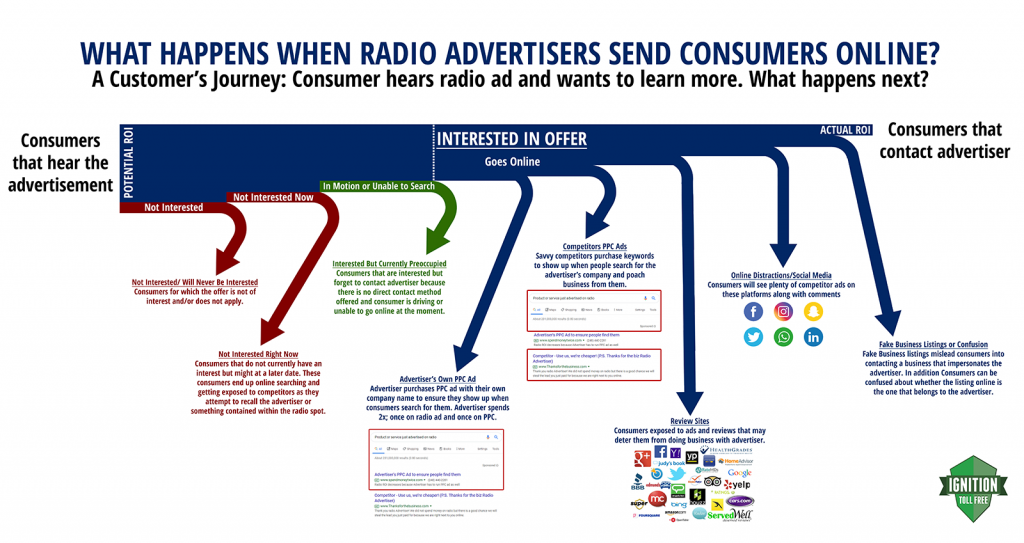Prospect Calls Still Top Performer In Lead Generation, Dwarfing Results Of Online Searches.
Below are excerpts from recent publishing by RAB.com contributor Bruno Tabbi, President and Co-Founder, Ignition Toll-Free.
Results. That’s what all advertisers want from any media channel they use.
Radio has proven that it can drive in-store traffic and online traffic but what about phone traffic? Despite all the tech options available today, many consumers like to make their initial inquiry to a business over the phone… there are still advertisers that successfully experience positive results when using a phone number to increase their sales – also known as direct response.
Rhinoshield uses a vanity phone number in radio ads airing on 93WIBC & 93.5/107.5 The Fan
When it comes to direct response advertising on radio, using an (easy to remember) vanity phone number is one of the best ways to get big results. One advertiser saw its sales increase 8x after adding 1-800-IDEAL-YOU to its radio ads. Before using 1-800-IDEAL-YOU they had used less memorable numbers like 844-323-THIN, short codes, and websites.
The idea of using a vanity phone number might seem a little passé in the era of the internet, AI and self-driving cars but their effectiveness is directly attributable to their ease of memorability and how they place consumers in direct contact with advertisers. That’s why vanity numbers on radio generate 58% more calls than random phone numbers.
And when it comes to consumers’ ability to recall URLs compared to vanity phone numbers, URLs are 78% less memorable than vanity phone numbers. The effectiveness of vanity phone numbers is bolstered further by the simple fact that communicating by voice is faster, easier, and more effective than typing into a smartphone (and continues to increase as voice technology becomes more ubiquitous). There are also practical limitations to sending listeners online, such as if they are driving or in motion.
Calls are the gold-standard in lead generation, outside of face-to-face, nothing compares. In fact, calls are 10-15 times more likely to generate a successful sale or follow-up activity than digital form submissions, which only convert 1% to 2% of the time, which means calls are much more efficient at generating revenue.
Direct vs. Winding Consumer Path
Once online, the listener will begin to enter their search query and the web browser will then make suggestions in the search bar with its autocomplete feature. These suggestions can present the listener with common search terms about the advertiser and its competitors. Once their search query is submitted, the results will present several different messages which may include the radio advertiser’s own PPC ad along with their competitors. The listener may also encounter competitor websites, review sites, websites recommendations, etc.
There can also be confusion over whether the site the listener found is the one that belongs to the radio advertiser. (For example, I personally made this mistake when I searched for a roofing company names Oakes Roofing. I had entered Oaks Roofing instead.)

The path for a listener to become a customer can be longer online compared to a vanity phone number. Imagine a plumbing company advertising on radio with 1-800-PLUMBING. When the listener hears that ad, the path for them to connect with the advertiser is simple and direct, all they have to do is dial and press send.

Vanity numbers boost response rates so well because they are easy to remember and direct, whereas sending listeners online requires additional steps before they can connect with the advertiser.
Radio’s strength is in driving awareness, traffic, and sales. Radio, combined with the use of vanity numbers, has proven to drive interest and sales.
